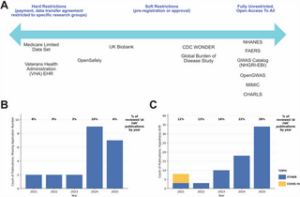
World leaders gathered in New York City on Monday for the Global Climate Summit 2023, a high-stakes meeting aimed at accelerating international efforts to combat climate change. The summit, which runs through the end of the week, brings together representatives from over 150 countries, including heads of state, environmental experts, and industry leaders, to discuss actionable solutions to the escalating climate crisis.
The urgency of the summit is underscored by a series of alarming reports released earlier this year, highlighting record-breaking temperatures, unprecedented natural disasters, and the rapid melting of polar ice caps. These developments have intensified calls for immediate and coordinated global action.
Key Agendas and Commitments
Central to the summit’s agenda is the commitment to limit global warming to 1.5 degrees Celsius above pre-industrial levels, a target set by the Paris Agreement in 2015. Nations are expected to present updated Nationally Determined Contributions (NDCs), outlining their plans to reduce greenhouse gas emissions.
Among the most anticipated announcements is a new initiative led by the European Union, which aims to achieve carbon neutrality by 2050. The initiative is set to include substantial investments in renewable energy and stricter regulations on industrial emissions.
Renewable Energy Investments
Renewable energy is at the forefront of discussions, with countries like China and India pledging significant investments in solar and wind power. These nations are also focusing on technological innovations to improve energy efficiency and storage capabilities.
“Investing in renewable energy is not just about reducing emissions; it’s about creating sustainable economic growth and energy security for the future,” said Dr. Maria Sanchez, a leading climate scientist from the University of Barcelona.
Challenges and Criticisms
Despite the optimistic tone of the summit, several challenges remain. Developing countries have raised concerns about the financial and technological support needed to transition to greener economies. They argue that wealthier nations, responsible for the majority of historical emissions, should bear a greater share of the costs.
Critics also point out that previous climate agreements have fallen short of their goals, citing a lack of enforcement mechanisms and political will. The summit aims to address these issues by proposing a new framework for accountability and transparency in climate commitments.
Historical Parallels
The current summit draws parallels to the 1997 Kyoto Protocol, the first international treaty aimed at reducing greenhouse gas emissions. While the protocol laid the groundwork for future agreements, it faced significant hurdles, including the withdrawal of key nations and insufficient emission reduction targets.
By the Numbers: According to the World Meteorological Organization, global temperatures have already risen by approximately 1.1 degrees Celsius since the late 19th century.
Implications and Future Outlook
The outcomes of the Global Climate Summit 2023 could have far-reaching implications for international climate policy. Successful agreements and commitments could pave the way for a more sustainable future, while failure to act decisively may exacerbate the impacts of climate change.
Looking ahead, experts emphasize the importance of maintaining momentum beyond the summit. “The real test will be in the implementation of these commitments. Continuous collaboration and innovation are essential to achieving our climate goals,” noted Dr. James Lee, an environmental policy analyst at the London School of Economics.
As the summit progresses, the world watches closely, hopeful for concrete actions that will steer the planet towards a more sustainable and resilient future. The next steps will involve translating ambitious pledges into tangible results, ensuring that the fight against climate change remains a global priority.





